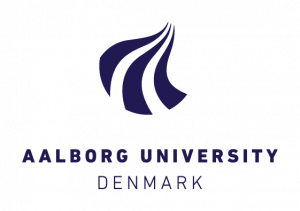Enabling Technologies for Multi-Robot Systems
Multi-robot systems are worth more than the sum of their parts. New platforms and sensors enable multiple robots to collaborate on complex tasks in new applications.

Technology enablers for multirobot systems
Traditionally, outdoor mobile robots work alone on specialized tasks, in contrast to fleets of indoor mobile robots that work on a common task such as logistics. New robot platforms with different mobilities, e.g., wheeled, legged or flying, are entering the market, and by using a combination of these platforms new use-cases can be explored in new domains.
Using both flying and ground based robots, sensor data can be recorded from different points of view and enable multi-robot systems to collaborate to get a better overall picture of the environment and complete their tasks in a more efficient manner.
Purpose / Vision
The purpose of the project is to explore the capabilities of multi-robot systems in new domains. In collaboration with the project partners, we will seek to obtain a deeper understanding of the technologies required to enable new use-cases in these environments.
This will be accomplished by enabling communication between multiple robot system and sharing of relevant data to solve more complex tasks. The multi-robot systems investigated in this project could potentially be a combination of ground based mobile robots and flying drones equipped with various sensors.
This project aims at gathering several interested companies, both technology developers, technology providers, integrators and end-users. A total of around 10 companies are expected to participate in the project.
A continuation of the activities in this project in one or more new collaborative projects from 2021-24 can easily be envisioned. Additionally, it is anticipated that if strong use-cases are identified, a partner collaboration for a project proposal for e.g., IFD Grand Solutions, EuroStars or other public funding, is a given.
Expected Results
We expect to visit 1-3 end-user sites with different environmental characteristics and record data using suitable robot platforms. The data will be gathered with sensors such as: 3D Lidar, RGB/depth cameras, GPS, and inertial odometry. This data will be used for environment understanding, 3D mapping and semantic mapping.
Interesting future use-cases will be identified in discussion with project partners by using the knowledge and data gathered during the visits at the potential end-user sites.
The outcome of the project will be technology demonstrations at TRL7 (System prototype demonstration in operational environment) and case demonstration at TRL5 (Technology validated in relevant environment) which will allow project partners to gain significant insights in and experience with enablers for multi-robot systems. This will (hopefully) create the foundation for new products, new strategic directions, and new intra-collaborations.
Project participants
Funding
The Ministry of Higher Education and Science has financed this project with 350.000 DKK.
Start and finish
The project runs from April – November 2021
Contact
Do you want to get involved or hear more? Do not hesitate to reach out:
- DTI (Lead): Kasper Camillus Jeppesen: kcj@teknologisk.dk / +45 7220 3476
- AAU: Karl Damkjær Hansen: kdh@es.aau.dk / +45 2513 9447
Contact us to learn more
Curious to find out more about the project and how you can get involved? Get in touch with Ole.


Knowledge-based innovation and the Fehmarn Belt project







